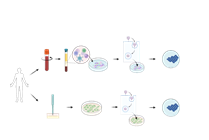Search Results
Viewing: 101-110 of 325 | All

Condition
Atrioventricular Septal Defect (AVSD)
Atrioventricular septal defect (AVSD), also commonly known as endocardial cushion defect or atrioventricular canal defect (AVCD), is a heart condition where there are holes between the heart’s upper and lower chambers, and the valves controlling blood flow may not form correctly.
Article
Onohara Lab Staff
Learn more about principal investigator Daisuke Onohara, MD, PhD, and his dynamic team in the Onohara Lab.
Article
Pulse Oximetry
A routine test called Pulse Oximetry can help identify most infants with critical congenital heart disease.

2nd Annual Pediatric Cardiology Symposium
Save the date for the second annual Pediatric Cardiology Symposium! This conference is designed to provide general pediatric practitioners with the cardiology knowledge and tools needed for patients with common and not so common pediatric cardiology complaints.

Condition
Aortic Stenosis
Aortic stenosis is a heart condition where the valve that controls blood flow from the heart to the body is too narrow. It can be treated with surgery or catheterization.
Article
Research & Innovation
Learn how faculty members in Tissue Engineering are involved in research.

Condition
Pulmonary Stenosis
Pulmonary stenosis is a heart defect in children that makes it harder for blood to flow. It can be treated with surgery or catheterization.

Condition
Tricuspid Atresia
Tricuspid atresia, also sometimes called hypoplastic right heart, is a heart defect where the valve between the heart’s right atrium and right ventricle doesn’t form. Most babies with tricuspid atresia will need many heart surgeries over their lifetime.

Article
Induced Pluripotent Stem Cells Core
The goal of the iPSC Core is to generate and share iPSC lines with investigators not only at Nationwide Children's and The Ohio State University, but throughout Ohio and across the country.

Condition
Double Outlet Right Ventricle (DORV)
Double outlet right ventricle (DORV) is a congenital heart defect where the two great arteries are both attached to the right ventricle. In DORV, the normally separated oxygen-rich arterial blood and oxygen-poor venous blood is mixed prior to leaving the heart.
